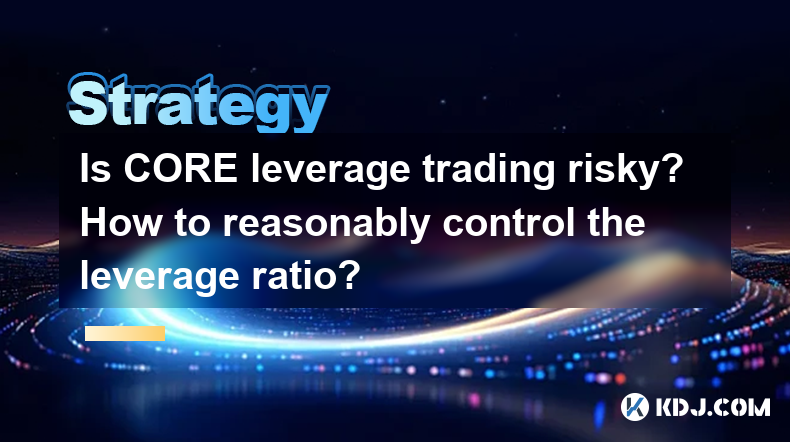-
 Bitcoin
Bitcoin $97,012.1938
2.51% -
 Ethereum
Ethereum $1,799.9262
1.60% -
 Tether USDt
Tether USDt $1.0002
0.02% -
 XRP
XRP $2.1301
0.59% -
 BNB
BNB $600.4081
0.54% -
 Solana
Solana $147.1608
2.24% -
 USDC
USDC $1.0000
0.01% -
 Dogecoin
Dogecoin $0.1716
2.28% -
 TRON
TRON $0.2481
1.68% -
 Cardano
Cardano $0.6646
1.28% -
 Sui
Sui $3.3273
5.92% -
 Chainlink
Chainlink $13.7124
2.52% -
 Avalanche
Avalanche $19.3923
-0.37% -
 UNUS SED LEO
UNUS SED LEO $8.7118
-0.16% -
 Stellar
Stellar $0.2590
0.69% -
 Shiba Inu
Shiba Inu $0.0...01271
2.87% -
 Toncoin
Toncoin $3.0045
1.02% -
 Hedera
Hedera $0.1752
1.16% -
 Bitcoin Cash
Bitcoin Cash $361.3938
1.99% -
 Hyperliquid
Hyperliquid $21.0006
3.94% -
 Litecoin
Litecoin $88.6979
4.77% -
 Polkadot
Polkadot $3.9309
1.60% -
 Dai
Dai $1.0004
0.03% -
 Monero
Monero $280.2767
-0.55% -
 Bitget Token
Bitget Token $4.2238
-0.67% -
 Ethena USDe
Ethena USDe $1.0006
0.03% -
 Pi
Pi $0.5814
1.53% -
 Pepe
Pepe $0.0...08260
7.51% -
 Bittensor
Bittensor $362.0226
1.69% -
 Uniswap
Uniswap $4.8273
0.27%
Is CORE leverage trading risky? How to reasonably control the leverage ratio?
Leverage trading with CORE can amplify profits but also magnify losses; manage risks by setting low leverage, using stop-loss orders, and monitoring market conditions closely.
May 07, 2025 at 12:49 pm

Is CORE leverage trading risky? How to reasonably control the leverage ratio?
Leverage trading in the cryptocurrency market, particularly with CORE, can be a high-stakes endeavor. Understanding the inherent risks and learning how to manage leverage effectively is crucial for any trader looking to engage in this practice. This article delves into the risks associated with CORE leverage trading and provides detailed guidance on how to control the leverage ratio reasonably.
Understanding the Risks of CORE Leverage Trading
Leverage trading allows traders to borrow funds to increase their trading position beyond what they could afford with their own capital. While this can amplify profits, it also magnifies losses, making it a double-edged sword. When trading CORE, the volatility of the cryptocurrency market can lead to significant price swings, which can be particularly dangerous when using leverage.
One of the primary risks of CORE leverage trading is the potential for a margin call. If the market moves against your position, you may be required to deposit additional funds to maintain your position. Failure to meet a margin call can result in the liquidation of your position at a loss. This risk is heightened in the volatile crypto market, where rapid price changes are common.
Another risk to consider is the possibility of over-leveraging. Traders may be tempted to use high leverage ratios to maximize potential gains, but this increases the likelihood of significant losses. The psychological pressure of trading with borrowed money can also lead to poor decision-making, exacerbating the risks.
Factors Influencing the Risk of CORE Leverage Trading
Several factors can influence the risk associated with CORE leverage trading. Market volatility is a significant factor, as cryptocurrencies like CORE can experience rapid price fluctuations. Traders need to be aware of market conditions and adjust their leverage accordingly.
Liquidity is another crucial factor. In a less liquid market, it can be challenging to enter or exit positions quickly, which can be problematic when using leverage. Traders should consider the liquidity of CORE and the trading platform they are using before engaging in leverage trading.
Regulatory changes can also impact the risk of leverage trading. Cryptocurrency regulations can change rapidly, and new rules may affect the availability and cost of leverage. Staying informed about regulatory developments is essential for managing the risks associated with CORE leverage trading.
How to Reasonably Control the Leverage Ratio
Controlling the leverage ratio is essential for managing the risks of CORE leverage trading. Here are some strategies to help you use leverage more safely and effectively:
Assess Your Risk Tolerance: Before engaging in leverage trading, evaluate your risk tolerance. Determine how much capital you are willing to risk and set a maximum leverage ratio that aligns with your risk profile.
Start with Low Leverage: If you are new to leverage trading, start with a low leverage ratio. This allows you to gain experience and understand how leverage affects your trades without exposing yourself to excessive risk.
Use Stop-Loss Orders: Implementing stop-loss orders can help limit potential losses. Set a stop-loss order at a level that you are comfortable with, ensuring that you can exit a position before losses become unmanageable.
Monitor Market Conditions: Keep a close eye on market conditions and adjust your leverage ratio accordingly. If the market is particularly volatile, consider reducing your leverage to minimize risk.
Diversify Your Portfolio: Diversification can help mitigate the risks of leverage trading. Instead of putting all your capital into a single leveraged position, spread your investments across different assets to reduce the impact of any single loss.
Regularly Review Your Positions: Continuously monitor and review your leveraged positions. Be prepared to adjust your leverage or exit positions if market conditions change or if your risk tolerance shifts.
Practical Steps to Implement Leverage Control
To put these strategies into practice, follow these detailed steps:
Choose a Reliable Trading Platform: Select a trading platform that offers leverage trading for CORE and has a good reputation for security and reliability. Ensure the platform provides tools for managing leverage, such as stop-loss orders and real-time market data.
Set Up Your Trading Account: Open an account on the chosen platform and complete the necessary verification processes. Deposit funds into your account, keeping in mind the amount you are willing to risk.
Determine Your Leverage Ratio: Based on your risk tolerance and market conditions, decide on an appropriate leverage ratio. For beginners, starting with a leverage ratio of 2:1 or 3:1 is often recommended.
Place Your Trade: Once you have set your leverage ratio, place your trade. Ensure you have a clear entry and exit strategy, and consider setting a stop-loss order to manage potential losses.
Monitor Your Position: Regularly check your position and the market conditions. If the market moves against you, be prepared to adjust your leverage or exit the position to minimize losses.
Review and Adjust: After closing your position, review your trading performance. Analyze what worked well and what could be improved. Adjust your leverage strategy based on your findings for future trades.
Common Mistakes to Avoid in CORE Leverage Trading
Avoiding common mistakes can help you manage the risks of CORE leverage trading more effectively. Here are some pitfalls to watch out for:
Over-Leveraging: Using too much leverage can lead to significant losses. Always keep your leverage ratio within your risk tolerance and avoid the temptation to increase it for higher potential gains.
Ignoring Stop-Loss Orders: Failing to use stop-loss orders can result in uncontrolled losses. Always set a stop-loss order to protect your capital.
Neglecting Market Research: Trading without understanding market conditions and trends can be risky. Always conduct thorough research before entering a leveraged position.
Emotional Trading: Leverage trading can be emotionally charged, leading to impulsive decisions. Stick to your trading plan and avoid making decisions based on emotions.
Tools and Resources for Managing Leverage
Several tools and resources can help you manage leverage more effectively when trading CORE. Here are some to consider:
Trading Platforms: Many trading platforms offer built-in tools for managing leverage, such as margin calculators and risk management features. Familiarize yourself with these tools to make informed decisions.
Risk Management Software: Specialized software can help you analyze and manage the risks associated with leverage trading. These tools can provide insights into potential outcomes and help you set appropriate leverage ratios.
Educational Resources: Numerous online courses, webinars, and articles are available to help you learn about leverage trading. Take advantage of these resources to improve your knowledge and skills.
Community and Forums: Engaging with other traders in online communities and forums can provide valuable insights and tips for managing leverage. Learn from the experiences of others to refine your trading strategy.
Frequently Asked Questions
Q: Can I use leverage trading to hedge my CORE investments?
A: Yes, leverage trading can be used as a hedging strategy to protect your CORE investments from adverse price movements. By taking a leveraged position in the opposite direction of your existing holdings, you can offset potential losses. However, it's important to carefully manage your leverage to avoid amplifying risks.
Q: How does the choice of trading platform affect leverage trading with CORE?
A: The choice of trading platform can significantly impact your leverage trading experience with CORE. Different platforms offer varying levels of leverage, fees, and risk management tools. It's crucial to choose a platform that aligns with your trading needs and provides reliable support for leverage trading.
Q: Are there any specific regulatory considerations for CORE leverage trading?
A: Regulatory considerations for CORE leverage trading can vary by jurisdiction. Some countries have strict regulations on leverage trading, while others may have more lenient rules. It's essential to stay informed about the regulatory environment in your region and ensure compliance with all applicable laws and regulations.
Q: How can I practice leverage trading with CORE without risking real money?
A: Many trading platforms offer demo accounts that allow you to practice leverage trading with virtual funds. Using a demo account can help you gain experience and refine your strategies without the risk of losing real money. Take advantage of these tools to build your confidence and skills before trading with real capital.
Disclaimer:info@kdj.com
The information provided is not trading advice. kdj.com does not assume any responsibility for any investments made based on the information provided in this article. Cryptocurrencies are highly volatile and it is highly recommended that you invest with caution after thorough research!
If you believe that the content used on this website infringes your copyright, please contact us immediately (info@kdj.com) and we will delete it promptly.
- Jupiter Expands Its Onboarding Features With Universal Send
- 2025-05-08 05:45:12
- Ethereum Activates Pectra Network Upgrade, Introducing Smart Accounts and Higher Staking Limits
- 2025-05-08 05:45:12
- On May 7, 2025, the cryptocurrency market is buzzing with significant developments
- 2025-05-08 05:40:13
- The Federal Reserve Maintained Its Lending Rate Between 4.25 and 4.5 Percent on Wednesday
- 2025-05-08 05:40:13
- As Institutional Players Slow Their Bitcoin Buying, Retail Traders Are Turning to a New Way to Ride the Next Wave – and BTC Bull Token Is Ready for Liftoff
- 2025-05-08 05:35:13
- Tether Expands Reach by Launching USDT Stablecoin on Kaia Blockchain
- 2025-05-08 05:35:13
Related knowledge

How to avoid MOVE contract liquidation? What is the appropriate margin ratio?
May 07,2025 at 09:07pm
Understanding MOVE Contract LiquidationMOVE contracts, also known as perpetual futures contracts, are financial derivatives that allow traders to speculate on the future price of a cryptocurrency without an expiration date. These contracts are popular in the crypto trading world because they offer high leverage, allowing traders to amplify their potenti...

How to identify MOVE false breakthroughs? What are the trend reversal signals?
May 08,2025 at 02:07am
Identifying false breakthroughs and understanding trend reversal signals in the cryptocurrency market, particularly for tokens like MOVE, is crucial for making informed trading decisions. False breakthroughs, also known as fakeouts, occur when the price of an asset breaks through a significant level but quickly reverses, trapping traders who acted on th...

How to track large MOVE orders? Is it feasible to follow the banker?
May 08,2025 at 12:15am
Tracking large MOVE orders in the cryptocurrency market can be a complex task, but it is essential for traders who want to understand market dynamics and potentially follow the moves of significant players, often referred to as 'bankers.' This article will guide you through the process of identifying and tracking large MOVE orders, and explore the feasi...

How to analyze MOVE price trends? What are the key signals in the candlestick chart?
May 07,2025 at 08:29pm
Analyzing the price trends of MOVE and understanding key signals in candlestick charts are crucial skills for any cryptocurrency trader. This article will delve into the methods and techniques to effectively analyze MOVE price trends and interpret candlestick chart signals to make informed trading decisions. Understanding MOVE Price TrendsTo start analy...

How to trade MOVE contracts? How to control leverage risk?
May 07,2025 at 07:08pm
Trading MOVE contracts is an advanced form of cryptocurrency trading that involves using leverage to amplify potential gains or losses. MOVE contracts, also known as perpetual futures, are popular among traders looking to speculate on the price movements of various cryptocurrencies without owning the underlying assets. However, trading these contracts c...

How to set MOVE stop loss points? What strategies are there to avoid excessive losses?
May 07,2025 at 09:49pm
Understanding MOVE Stop Loss PointsIn the volatile world of cryptocurrencies, managing risk is crucial to maintaining a healthy portfolio. One of the key tools traders use to manage risk is the stop loss order. A MOVE stop loss point is a specific type of stop loss that is designed to protect against significant market movements. This type of stop loss ...

How to avoid MOVE contract liquidation? What is the appropriate margin ratio?
May 07,2025 at 09:07pm
Understanding MOVE Contract LiquidationMOVE contracts, also known as perpetual futures contracts, are financial derivatives that allow traders to speculate on the future price of a cryptocurrency without an expiration date. These contracts are popular in the crypto trading world because they offer high leverage, allowing traders to amplify their potenti...

How to identify MOVE false breakthroughs? What are the trend reversal signals?
May 08,2025 at 02:07am
Identifying false breakthroughs and understanding trend reversal signals in the cryptocurrency market, particularly for tokens like MOVE, is crucial for making informed trading decisions. False breakthroughs, also known as fakeouts, occur when the price of an asset breaks through a significant level but quickly reverses, trapping traders who acted on th...

How to track large MOVE orders? Is it feasible to follow the banker?
May 08,2025 at 12:15am
Tracking large MOVE orders in the cryptocurrency market can be a complex task, but it is essential for traders who want to understand market dynamics and potentially follow the moves of significant players, often referred to as 'bankers.' This article will guide you through the process of identifying and tracking large MOVE orders, and explore the feasi...

How to analyze MOVE price trends? What are the key signals in the candlestick chart?
May 07,2025 at 08:29pm
Analyzing the price trends of MOVE and understanding key signals in candlestick charts are crucial skills for any cryptocurrency trader. This article will delve into the methods and techniques to effectively analyze MOVE price trends and interpret candlestick chart signals to make informed trading decisions. Understanding MOVE Price TrendsTo start analy...

How to trade MOVE contracts? How to control leverage risk?
May 07,2025 at 07:08pm
Trading MOVE contracts is an advanced form of cryptocurrency trading that involves using leverage to amplify potential gains or losses. MOVE contracts, also known as perpetual futures, are popular among traders looking to speculate on the price movements of various cryptocurrencies without owning the underlying assets. However, trading these contracts c...

How to set MOVE stop loss points? What strategies are there to avoid excessive losses?
May 07,2025 at 09:49pm
Understanding MOVE Stop Loss PointsIn the volatile world of cryptocurrencies, managing risk is crucial to maintaining a healthy portfolio. One of the key tools traders use to manage risk is the stop loss order. A MOVE stop loss point is a specific type of stop loss that is designed to protect against significant market movements. This type of stop loss ...
See all articles





















































































